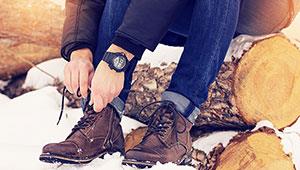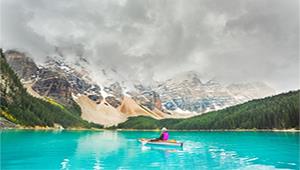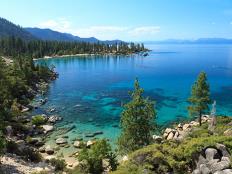STEP 3: Light the Fire
Now it's time to enjoy the results of your labor. Remember to keep children and pets safely away, then light your tinder. For best results light the tinder from several sides. Don't squirt charcoal lighter fluid into a fire; flames could travel up the stream and burn you. And NEVER use gasoline!
Once your campfire is established, feed it with additional wood as needed, taking care not to build the flames too high. Be sure to keep your fire extinguishing tools nearby, and never leave a fire unattended, even for a moment.
Putting Out Your Fire
Once the evening is over, it's your responsibility to put your campfire out completely so give yourself plenty of time to do the job right.
Start by sprinkling--not pouring--water onto the flames or coals. Don't flood the fire ring or pit as you or the next camper will want to use it later.
As you sprinkle, stir the embers with a stick or shovel to ensure that all the coals get wet. Once the steam has subsided and you no longer hear any hissing sounds you're just about done.
Before you head off to bed or pack up to leave, place the back of your hand just above the wet ashes. Don't touch them as they could still be hot. Don't feel any heat? Then the fire is out. If it still feels warm add more water and stir until the fire bed is cold.
With the proper fire ring or pit, the right tinder, kindling and firewood, plus selecting the style of campfire that best meets your preferences, you and your family can safely enjoy an evening under the stars while making s'mores.
Don't Forget: Safety First
Safety is the most important factor when learning how to start a campfire--especially if you have kiddie campers. A 2011 study revealed that a person is injured by fire every 30 minutes, so stay alert as dancing flames have a magnetic quality that draws people close.
Right behind personal safety is the environment. The Earth's climate change is leaving our forests and grasslands parched--to the point where one errant spark can set off a raging wildfire. So before you even think about how to start a campfire, consider these important points:
- Are campfires allowed in the area? Look for posted signs. Or ask a ranger or camp host. Just because a campsite has a fire ring doesn't automatically mean fires are permitted.
- Is the site properly prepared? Be sure there's at least 8 to 10 feet of bare dirt surrounding the fire ring. Take the time to clear away any flammable debris that can catch fire. And make sure there are no tree branches overhanging the area; they can catch fire more easily than you think.
- How about weather conditions? Take heed of building clouds and rising winds. An approaching storm can easily fan the smallest campfire out of control. If there's even the slightest doubt, wait for safer conditions.
- Do you have fire safety equipment? Always make sure there's a shovel nearby, along with a few gallons of water. While water is preferred, a liberal application of loose dirt can keep things under control. Just be aware that coals can stay dangerously hot beneath a blanket of soil many hours after you've put the fire out.
 Book your next camping trip
Book your next camping trip
- 2
- of
- 2








Discuss This Article